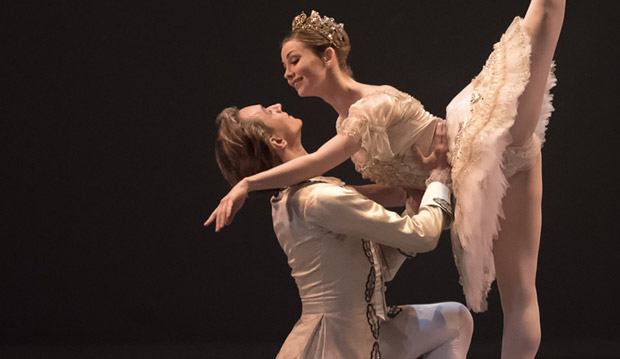
© Marc Haegeman. (Click image for larger version)
Russian Ballet Icons Gala
In the steps of the Ballets Russes
★★★★✰
London, Coliseum
12 March 2017
russianballeticons.com
Gallery of pictures by Marc Haegeman – many thanks to him and the Gala for those used here.
Gallery of rehearsal pictures by Dave Morgan
The twelfth annual Russian Ballet Icons gala once again celebrated the legacy of Diaghilev’s Ballets Russes, claiming the exiled troupe as an early twentieth century flagship of Russian culture. According to official welcoming statements in the programme, the gala helps to promote international understanding. As Olga Balakleets, founder and artistic director of the gala, urged: ‘Have an inspirational evening’.
The long gala (three and a half hours with one interval) was well organised, with no speeches and no protracted curtain calls. Pas de deux succeeded each other swiftly, with projected backdrops by Nina Kobiashvili. Some of the links with the Diaghilev repertoire were more tenuous than others; a couple didn’t work as gala numbers, but all the dancers who turned up to perform were delightful.
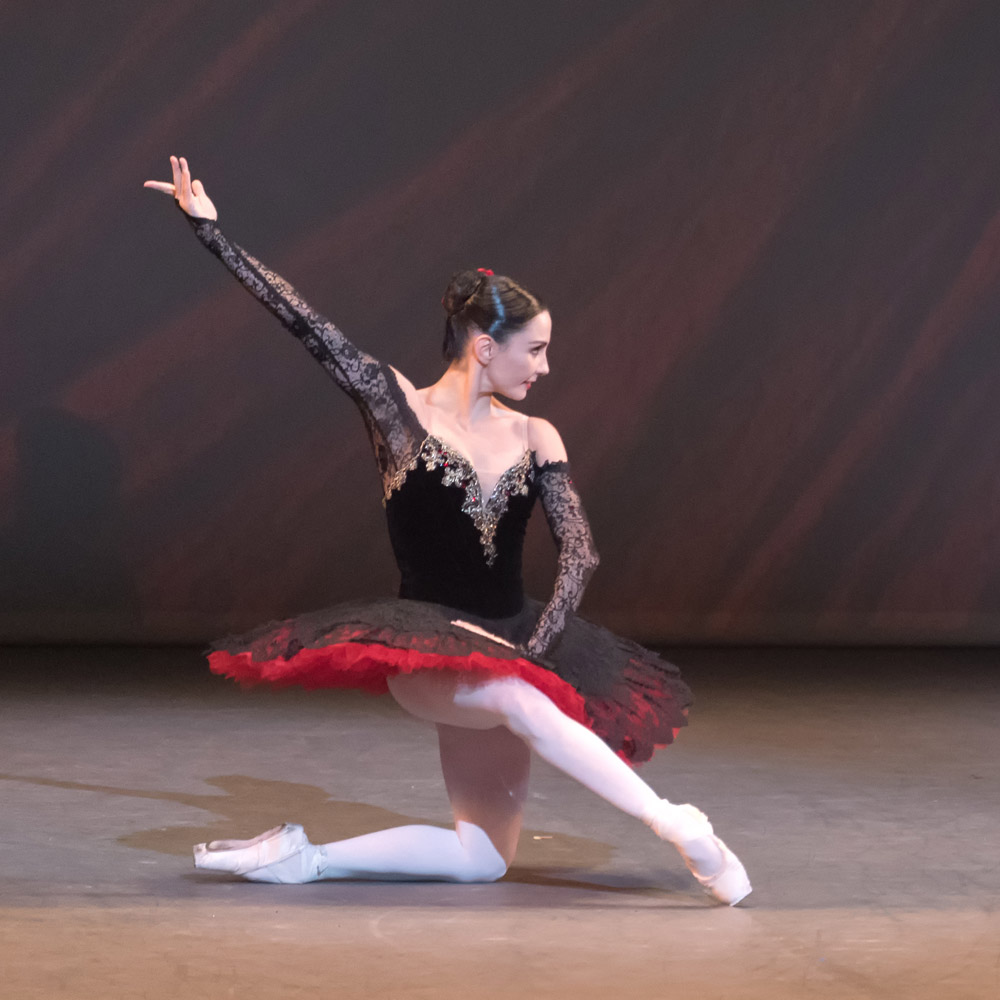
© Marc Haegeman. (Click image for larger version)
Among the highlights were British-based dancers setting the Russians a challenge: Vadim Muntagirov near the start of the gala and Tamara Rojo at the end, with Sarah Lamb and Steve McRae providing a preview of Rubies in the first half of the evening. Vaganova-trained dancers from St Petersburg glowed as richly as Bolshoi show-offs – among them Ivan Vassiliev and Maria Alexandrova.
Vassiliev opened proceedings with a naughty twinkle in his eye in the pas de deux from Scéhérazade (attributed to Fokine, as revised by Andris Liepa). A beefy boy these days, his ardour as the Golden Slave and his powerful leaps were indefatigable. His Zobéide was Bolshoi ballerina Kristina Kretova, relishing the lustful foreplay. A flamboyant start to the gala, with the English National Ballet Philharmonic conducted by Valery Ovsyanikov, well accustomed to dancers’ requirements.
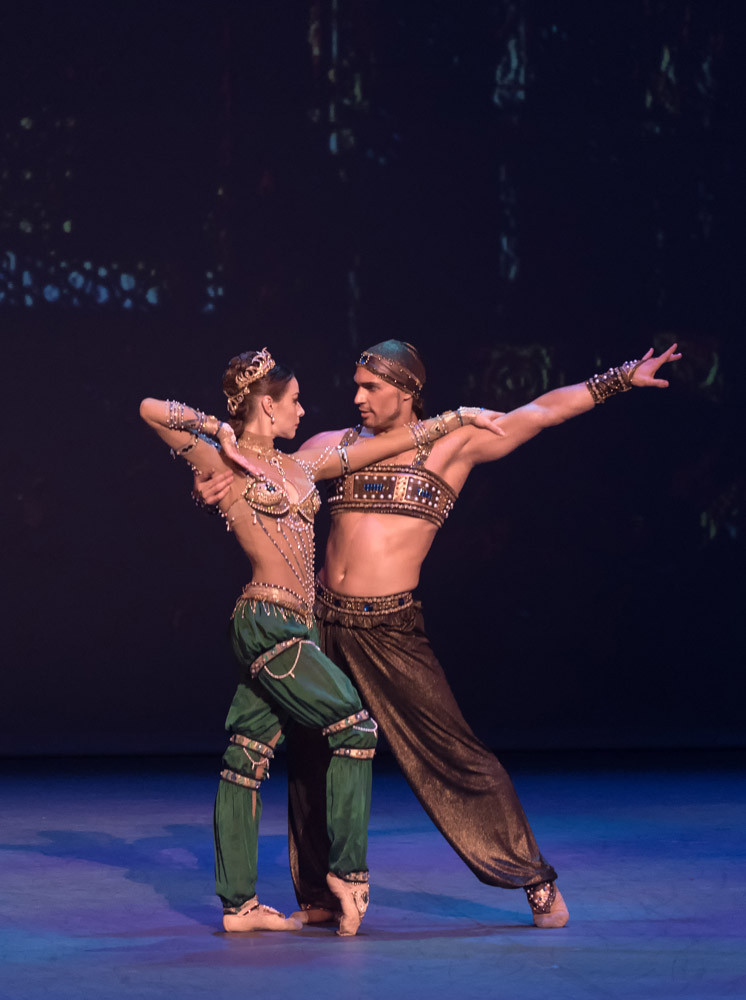
© Marc Haegeman. (Click image for larger version)
If we weren’t asked to take Vassiliev seriously, we had to respect and admire Vadim Muntagirov as Siegfried in the Black Swan pas de deux with Liudmila Konovalova. As well as being an expert partner, Muntagirov lands every leap with a cat-like finish and precision, turning effortlessly counter-clockwise. He believed in his role, unlike Konovalova (a principal with the Vienna State Ballet), who might be better suited to Odette than Odile.
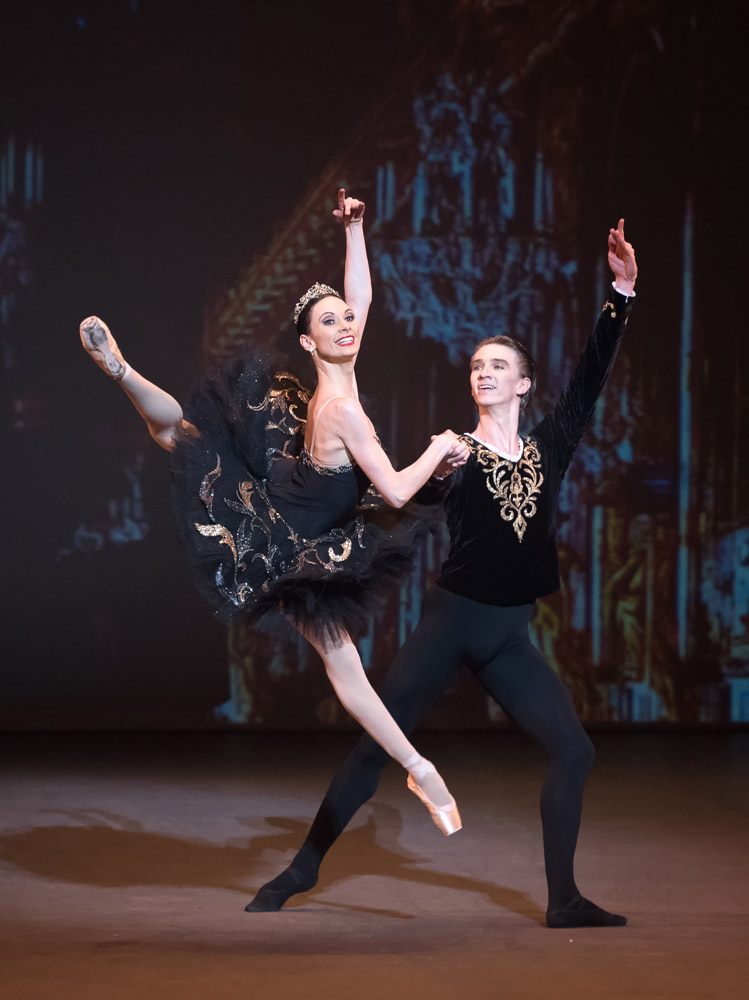
© Marc Haegeman. (Click image for larger version)
For a gala seductress, no-one better than Maria Alexandrova, who has recently left the Bolshoi for a freelance career. She danced The Firebird pas de deux, more woman than bird, with Vladislav Lantratov from the Bolshoi as the Tsarevitch. For the gala, in Andris Liepa’s version of Fokine’s 1910 ballet, she interpreted the Firebird as an imperiously feisty creature, charming Lantratov’s amused princeling into releasing her from his grip. When she gazed into his eyes, he had no choice but to succumb – as did the audience.

© Marc Haegeman. (Click image for larger version)
Staging Le Spectre de la Rose (no revival credit) was a mistake, with an ill-matched cast of Yulia Makhalina, at 49 apparently still with the Mariinsky, and Xander Parish, 18 years younger. He had the stamina (just) for the role of the spirit of the rose, but not the charisma. Only an Acosta or Nureyev could give a glimpse of the impression Nijinsky made. Lesser dancers should leave it well alone.
Petrushka’s solo, alone in his cell, doesn’t work as a gala number. Vladimir Shklyarov gave as good an account of it as he could, creating a character, to his credit. We hope to see more of him when the Mariinsky Ballet comes to London in the summer.

© Marc Haegeman. (Click image for larger version)
Evgenia Obraztsova will not be with the company, for she switched over to the Bolshoi in 2012. Performing the grand pas de deux from The Sleeping Beauty, however, she seemed still a Mariinsky dancer, regal, refined and very feminine. Dmitry Gudanov (a Bolshoi principal) was calmly gallant as her prince. Obraztsova has the elegant épaulement and port de bras that mark a Vaganova-trained ballerina.
Senior students from the Vaganova Academy in St Petersburg performed a divertissement from The Fairy Doll, choreographed by the Legat brothers in 1903. Nikolay Tsiskaridze, director of the school since 2014, has adapted the choreography for seven of the pupils. The highlight was the pas de trois for The Fairy Doll and two Pierrots: Eleanora Sevenard (class of T.A Udalenkova), with Oscar Frame and Pavel Mikheev (both class of Tsiskaridze). The divert. certainly deserved its place in the gala: the confident students already seem fully fledged for professional employment.
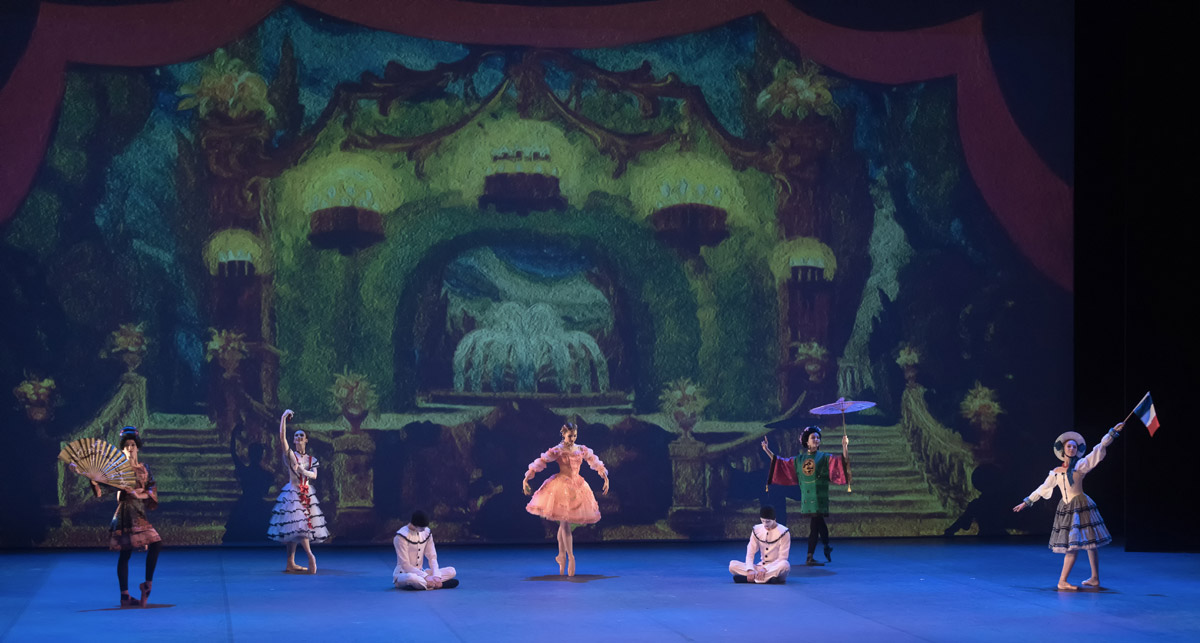
© Marc Haegeman. (Click image for larger version)
Two mature dancers near the end of their careers performed Jerome Robbins’s Afternoon of a Faun, which was an error of judgment. Gudanov and Svetlana Lunkina couldn’t convey the drowsy arousal of self-concerned youngsters in a dance studio, with only portable barres in place of a gauzy set. The brief ballet needs at least an assumption of innocence.
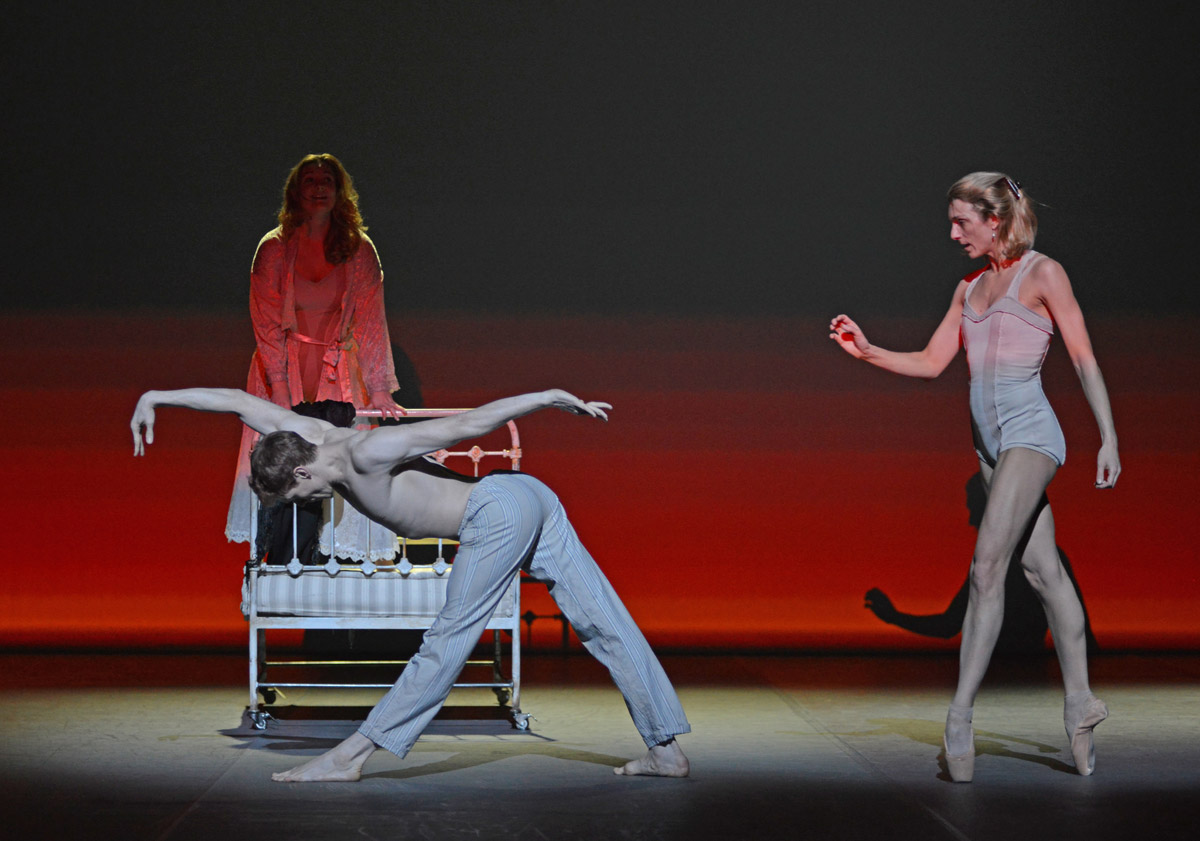
© Dave Morgan. (Click image for larger version)
More disastrous was the extract from Les Enfants Terribles, danced by Zenaida Yanowsky and Edward Watson with opera singers Jennifer Davis and Gyula Nagy. And a bath tub. Taken out of context, the pas de deux, choreographed by Javier de Frutos, made no sense. Its only justification was that Philip Glass’s ‘dance opera’ is based on a story about incestuous siblings by Jean Cocteau, who collaborated with Diaghilev on several ballets.

© Marc Haegeman. (Click image for larger version)
Olga Balakleets likes to include bold new works in her galas – remember Tamara Rojo with a goldfish bowl? This year the commission was Theatrum Vitae, given in four short sections to a variety of musical extracts. According to the scenario in the programme, Italian dancer Davide Dato (now with Vienna State Ballet) was a philosophical shepherd in love with a mythical beauty (Konovalova) through the ages. The concept was by Rafael Porzycki, the choreography by Xenia Wiest, Russian-born dancer and prolific choreographer. It was hard to tell from the unremarkable pas de deux whether this will indeed prove to be ‘a life-changing creative venture that will touch the hearts and minds of people all over the world, transcending barriers and uniting people everywhere’. Good luck with that.
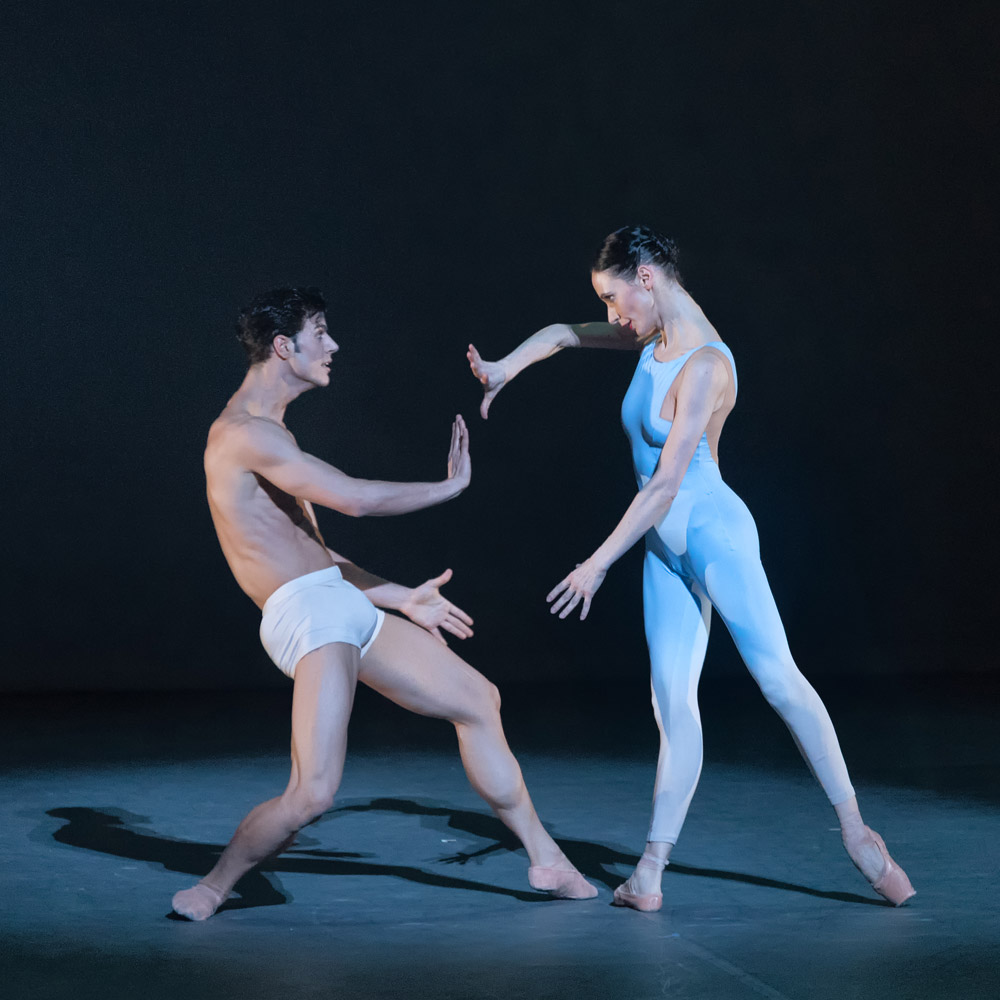
© Marc Haegeman. (Click image for larger version)
Included in the gala were two pas de deux from Balanchine’s Jewels: Sarah Lamb and Steven McRae in Rubies, an exciting foretaste of the Royal Ballet’s upcoming revival of the three-part ballet; and Maria Kochetkova (now with San Francisco Ballet) and Tyler Angle (New York City Ballet) in Diamonds. The latter pair looked ill-suited, though he’s an excellent partner.

© Marc Haegeman. (Click image for larger version)
No gala is complete without The Dying Swan – Iana Salenko, arms as pliant as strands of watery reeds – and the Don Quixote pas de deux as a grand finale. Rojo and Isaac Hernandez brought off every virtuoso feat with panache. What courage, what skill!

© Marc Haegeman. (Click image for larger version)
Which brings me to the high point of the evening for many, though not for me. The pas de deux from Light Rain, choreographed by Gerald Arpino in 1981, comes from an early Joffrey Ballet staple described by Anna Kisselgoff in The New York Times as ‘pure hard-core corn’.
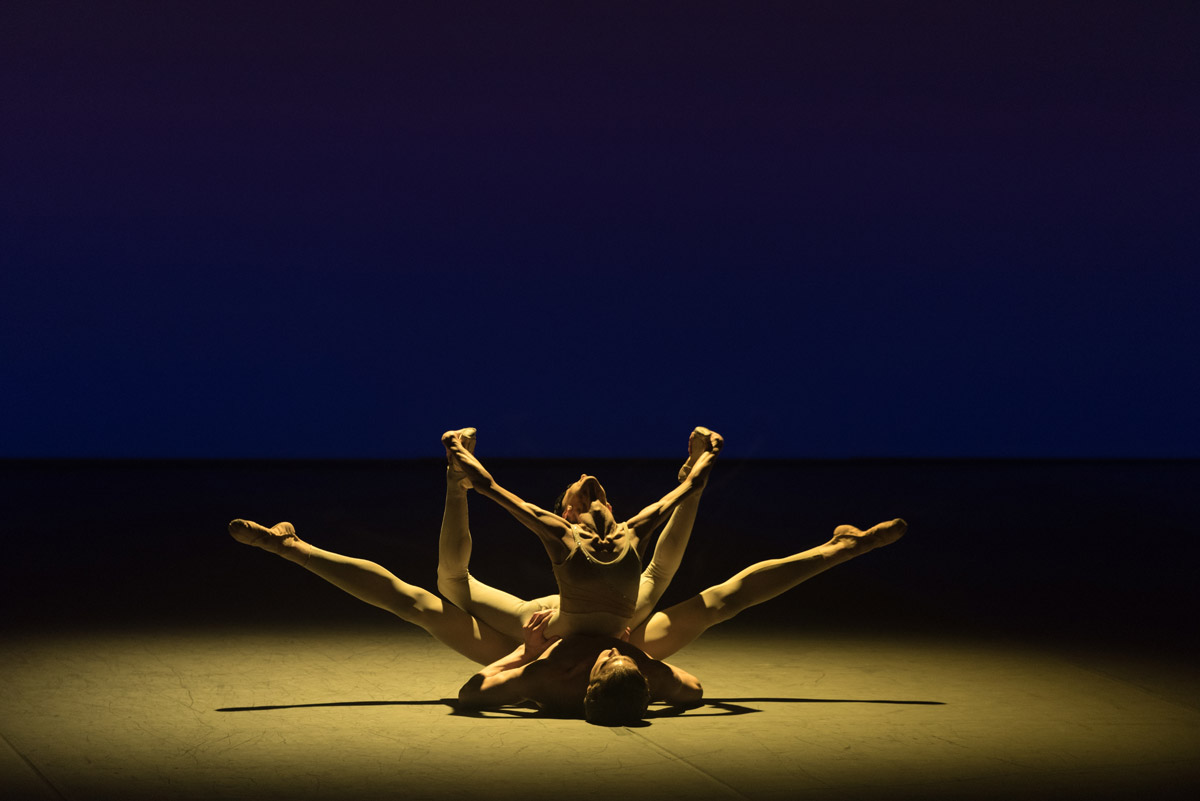
© Marc Haegeman. (Click image for larger version)
A burly man (Marlon Dino) enables a tiny hypermobile woman (Lucia Lacarra, his wife) to assume acrobatic positions to pseudo-exotic music: a bit like the ‘Swan Lake’ adagio act by the married couple of Chinese acrobats in which she ends up standing on his head, but less perilous. Light Rain has absolutely nothing to do with the Ballets Russes (or Russian culture) but it was wildly applauded, and much lauded in the interval.












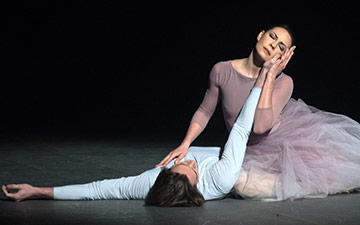
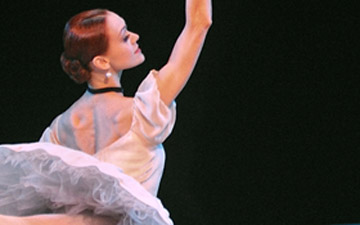
Yulia Makhalina is with , and has always been with, the Mariinsky not the Bolshoi.
Now corrected (BM). JP: My mistake – in spite of having seen Makhalina perform leading roles many times in the 1980-90s, when she was artistic director Oleg Vinogradov’s much favoured ballerina in the then-Kirov Ballet.
Lovely review, but you spelled the names of the Vaganova students and teachers wrong: it’s Eleonora not Eleonor and her teacher’s name is T.A. Udalenkova not Udalenkov. Also, for consistency’s sake, I think you should include Tsiskaridze’s initials, which are N.T. 🙂
Thank you – and now corrected the spellings.